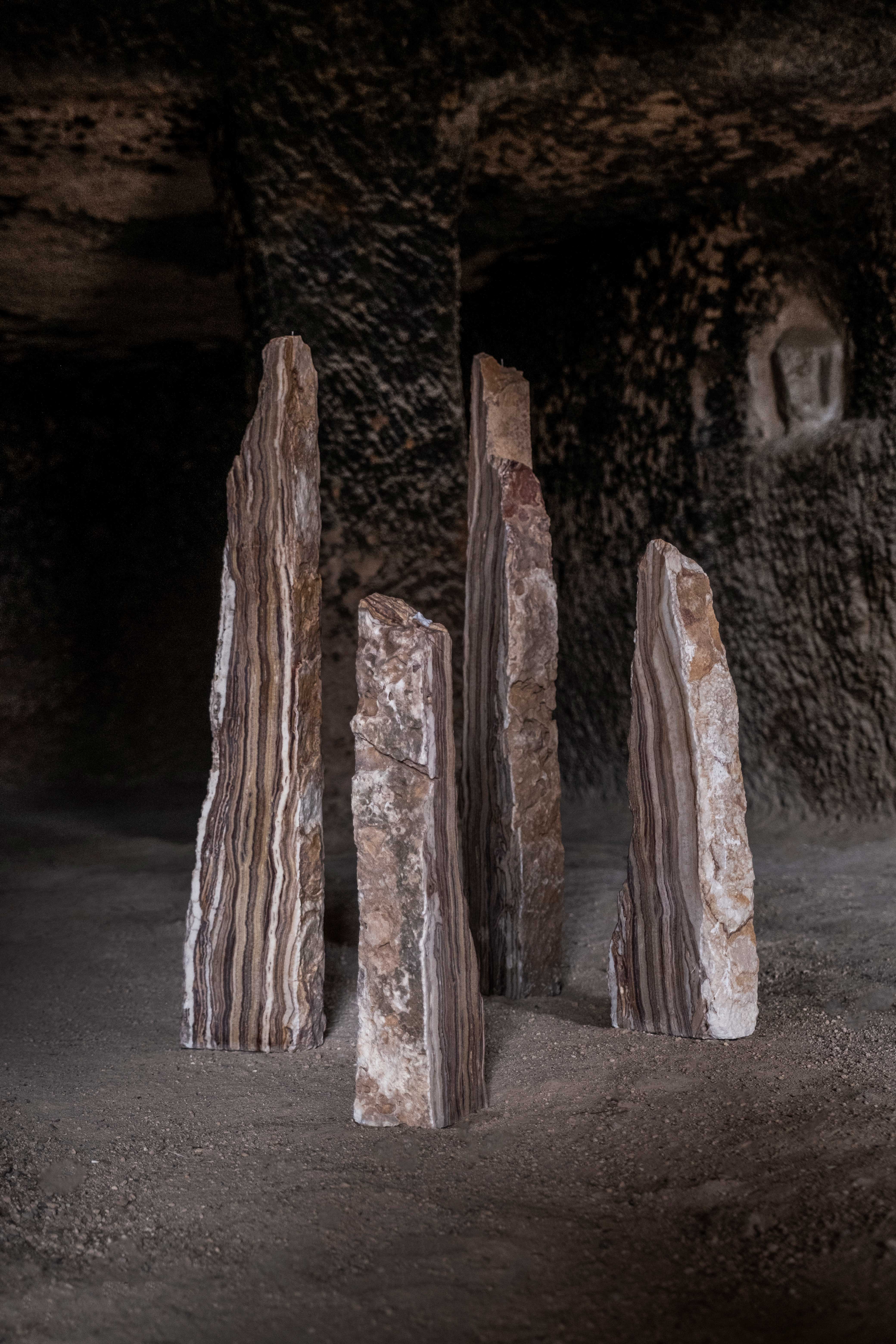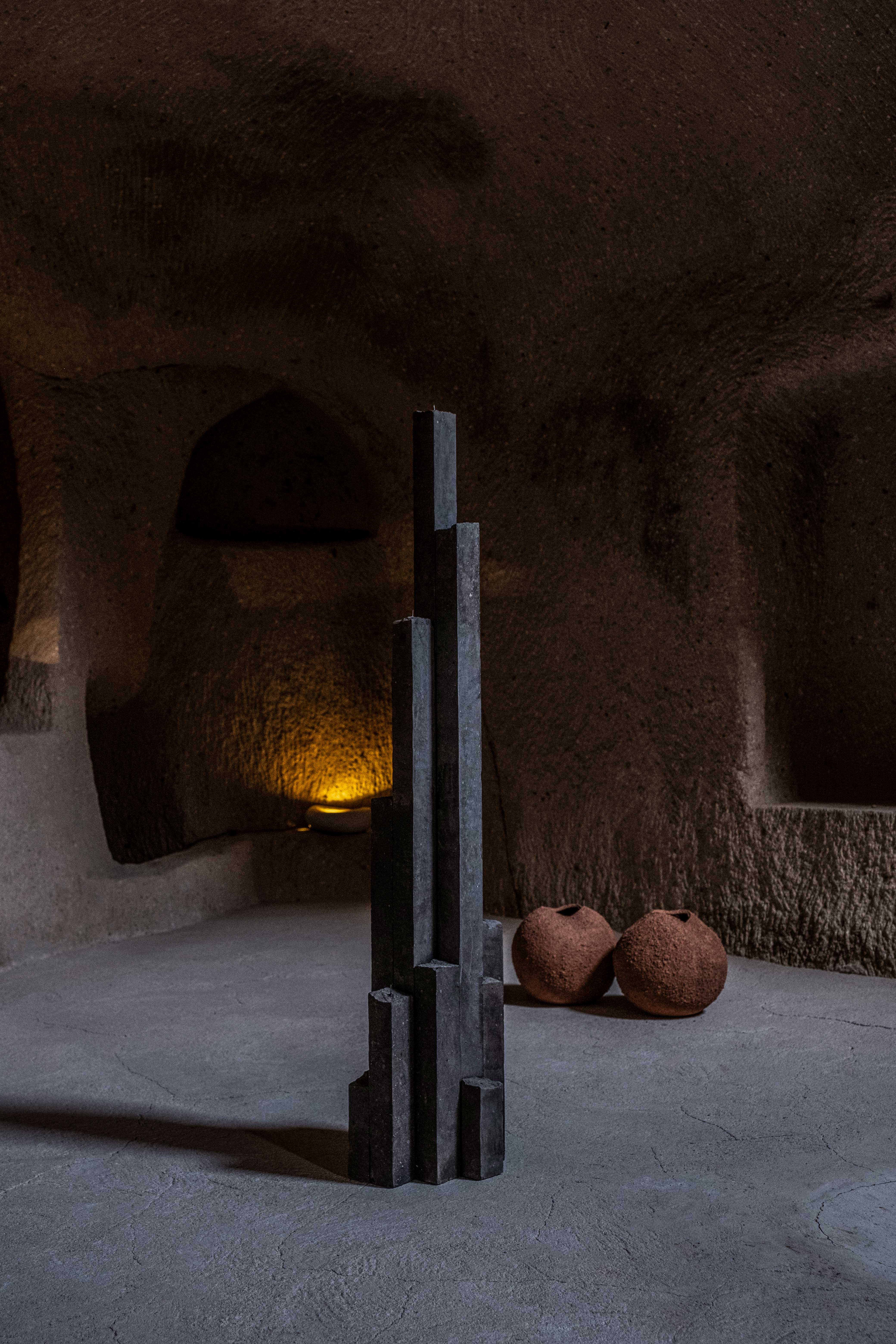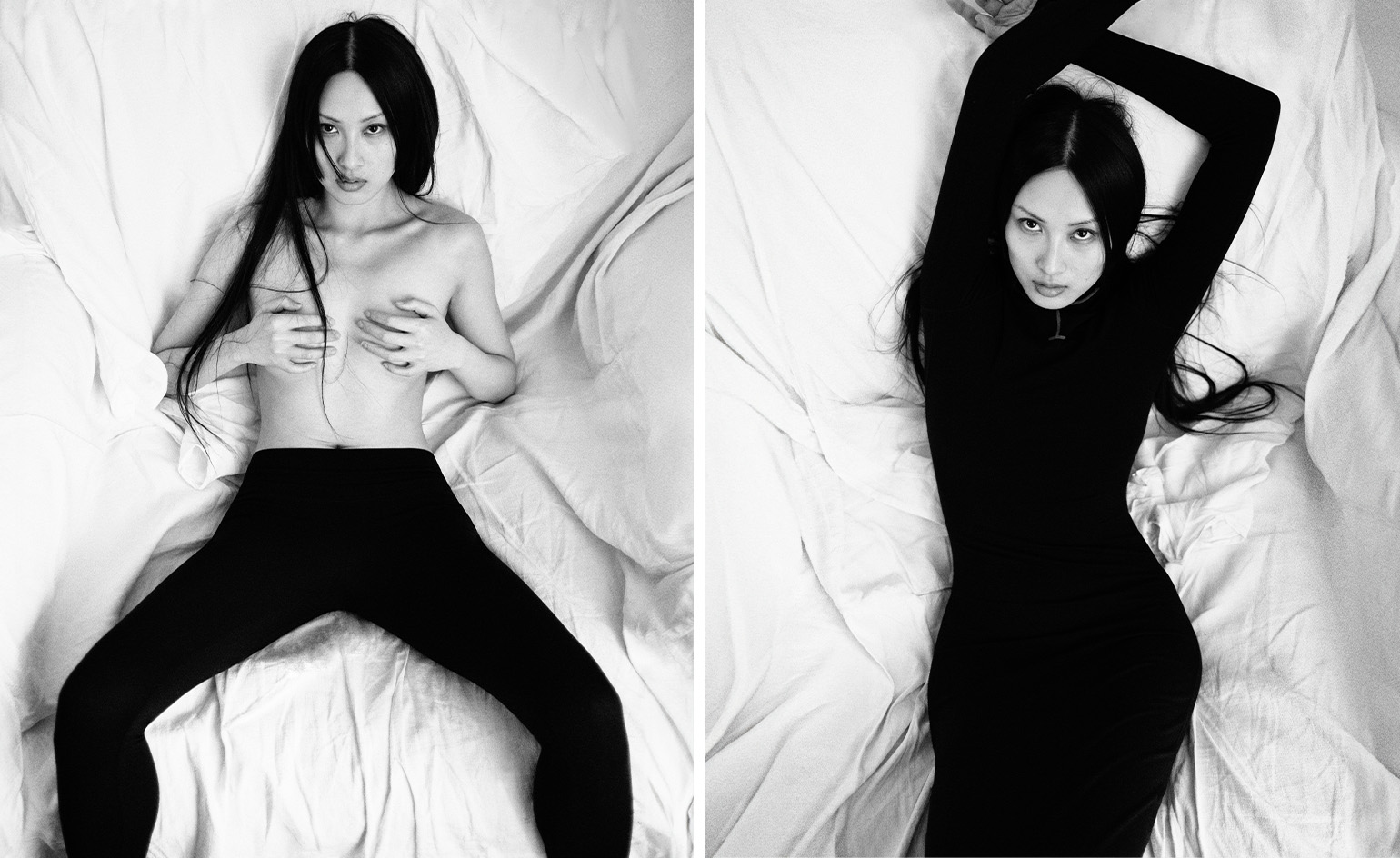Cappadocia landscapes and history inspire Galerie Philia’s latest designs
The result of a Cappadocia residency, Galerie Philia presents its latest Transhumances initiative with designs made in Turkey and inspired by the region's Paleolithic past

Cappadocia, in the Central Anatolia region of Turkey, has been continuously inhabited since the Palaeolithic era. For millennia, residents carved their homes into the soft tuff stone – hardened volcanic ash from long-dormant volcanoes – that dips and swells along the arid valley, occasionally erupting into narrow towers known as fairy chimneys. The region exists as a natural sculpture park, with abstracted stone configuration dotting the landscape and remnants of civilisations buried within it.
It was this expressive, enchanting view that inspired Galerie Philia founder Ygaël Attali to base the third instalment of roving design residency Transhumances here (previous iterations touched down in Florence and the south of France). In November 2023, they gallery brought four designers – Andres Monnier, Morghen Studio, Laura Pasquino and Elsa Foulon – to live and work in Cappadocia for a week, ultimately creating new work that will be exhibited at the Taskonaklar hotel, where the residency took place (the exhibition runs from 15 February to 16 March 2024).
Galerie Philia’s Cappadocia residency

Taskonaklar inhabits a series of caves that spill down the edge of a ravine known as Pigeon Valley, named after the rows of dovecotes carved into the rock that once housed the domesticated birds – and where flocks of wild ones still roost. Peering over the edge of the cliff, the valley unfolds beneath you. Conical fairy chimneys surge from the earth and the cliff face opposite ripples like a pleated skirt.
Each of the four residents was given carte blanche at the beginning of the residency and eventually found a way to incorporate this surrounding environment into their practice.

Mexican designer Andres Monnier, for instance, set up a studio inside a local quarry, where he worked with cast-off travertine and grey local stone. He will show two pieces in the exhibition. The first, a cantilevered side table fashioned from a single rough block. The second is a standing candelabra that takes the form of a cluster of stone columns. To realise his pieces Monnier worked alongside the quarry’s artisans, familiarising himself with the materials as well as local craft knowledge.

Meanwhile, a stroll through the valley was enough for Rodolfo Viola from Morghen Studio to find the form of his piece. 'I wanted to create a chandelier because that's what we usually do,' explains the Milan-based designer, who, alongside his studio partner Roberto Tarter is known for elaborate abstracted lighting, usually made from precious materials like brass. 'So I climbed to the bottom of the valley and brought back this tree.' Viola used the spindly form as the body of the hanging light, which is suspended from the roof of Taskonaklar’s cave exhibition space and whose branches terminate with small ceramic petals that soften the bright LED lights.

Estonian ceramic artist Laura Pasquino sourced terracotta clay from a local supplier to create her hand-built, orb-like vessels. 'The red clay comes from the local rivers,' she says. 'We were fortunate to have a good connection with a local pottery master, who makes the clay himself.' However, the natural material came with its own challenges. 'The clay is textured, with lots of little stones. It's very sensitive to the climate. When the sun dries the parts with larger rocks it tends to crack, so we have to move to pieces as the sun shifts. But it’s been an incredible experience to learn how this material works.'
Receive our daily digest of inspiration, escapism and design stories from around the world direct to your inbox.

French designer and ceramicist Elsa Foulon also worked with clay. From her room overlooking the valley, she was taken with how the light shifted, bringing out new colours and forms as it fell and rose. 'I was so surprised with how the light changed the landscape every second of the day,' she explains. Her white concave ceramic lamps are finished with gold paint on the interior, creating a warm glow from within, envisioning how light would have appeared when this land was first settled. 'I imagine thousands of years ago,' she says. 'This is how the Palaeolithic light would have looked.'
Transhumances III is on display at the Taskonaklar Hotel in Cappadocia, Turkey from 15 February to 16 March 2024

Laura May Todd, Wallpaper's Milan Editor, based in the city, is a Canadian-born journalist covering design, architecture and style. She regularly contributes to a range of international publications, including T: The New York Times Style Magazine, Architectural Digest, Elle Decor, Azure and Sight Unseen, and is about to publish a book on Italian interiors.
-
 Winston Branch searches for colour and light in large-scale artworks in London
Winston Branch searches for colour and light in large-scale artworks in LondonWinston Branch returns to his roots in 'Out of the Calabash' at Goodman Gallery, London ,
-
 The most anticipated hotel openings of 2026
The most anticipated hotel openings of 2026From landmark restorations to remote retreats, these are the hotel debuts shaping the year ahead
-
 Is the future of beauty skincare you can wear? Sylva’s Tallulah Harlech thinks so
Is the future of beauty skincare you can wear? Sylva’s Tallulah Harlech thinks soThe stylist’s label, Sylva, comprises a tightly edited collection of pieces designed to complement the skin’s microbiome, made possible by rigorous technical innovation – something she thinks will be the future of both fashion and beauty